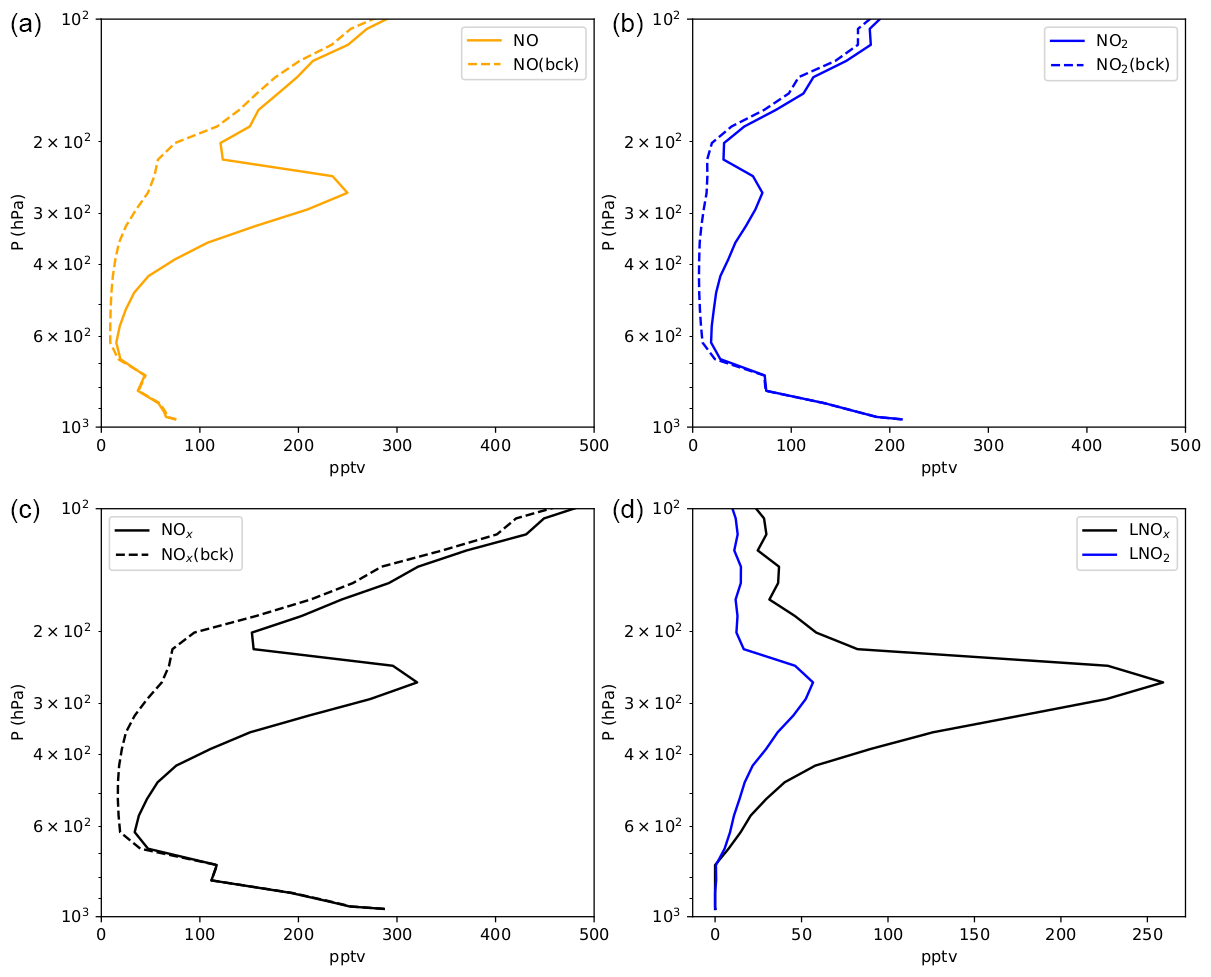New publication in Atmospheric Measurements Techniques

Pérez-Invernón et al. study the NOx production of single lightning flashes in the Pyrenees and the Ebro Valley in their publication “Quantification of lightning-produced NOx over the Pyrenees and the Ebro Valley by using different TROPOMI-NO2 and cloud research products” published in the Open Acess EGU journal “Atmospheric Measurements Techniques”. They use vertical mixing ratio profiles of NO, NO2, NOx, LNOx and LNO2 extracted from EMAC simulations with and without lightning for calculation of the LNOx air mass factor.
https://doi.org/10.5194/amt-15-3329-2022
Abstract: Lightning, one of the major sources of nitrogen oxides (NOx) in the atmosphere, contributes to the tropospheric concentration of ozone and to the oxidizing capacity of the atmosphere. Lightning produces between 2 and 8 Tg N yr−1 globally and on average about 250 ± 150 mol NOx per flash. In this work, we estimate the moles of NOx produced per flash (LNOx production efficiency) in the Pyrenees (Spain, France and Andorra) and in the Ebro Valley (Spain) by using nitrogen dioxide (NO2) and cloud properties from the TROPOspheric Monitoring Instrument (TROPOMI) as well as lightning data from the Earth Networks Global Lightning Network (ENGLN) and from the EUropean Co-operation for LIghtning Detection (EUCLID). The Pyrenees are one of the areas in Europe with the highest lightning frequencies, which, along with their remoteness as well as their very low NOx background, enables us to better distinguish the LNOx signal produced by recent lightning in TROPOMI NO2 measurements. We compare the LNOx production efficiency estimates for eight convective systems in 2018 using two different sets of TROPOMI research products provided by the Royal Netherlands Meteorological Institute (KNMI) and the Deutsches Zentrum für Luft- und Raumfahrt (DLR). According to our results, the mean LNOx production efficiency in the Pyrenees and in the Ebro Valley, using a 3 h chemical lifetime, ranges between 14 and 103 mol NOx per flash from the eight systems. The mean LNOx production efficiency estimates obtained using both TROPOMI products and ENGLN lightning data differ by ∼ 23 %, while they differ by ∼ 35 % when using EUCLID lightning data. The main sources of uncertainty when using ENGLN lightning data are the estimation of background NOx that is not produced by lightning and the time window before the TROPOMI overpass that is used to count the total number of lightning flashes contributing to freshly produced LNOx. The main source of uncertainty when using EUCLID lightning data is the uncertainty in the detection efficiency of EUCLID.
© Author(s) 2022. This work is distributed under the Creative Commons Attribution 4.0 License.
Pérez-Invernón, F. J., Huntrieser, H., Erbertseder, T., Loyola, D., Valks, P., Liu, S., Allen, D. J., Pickering, K. E., Bucsela, E. J., Jöckel, P., van Geffen, J., Eskes, H., Soler, S., Gordillo-Vázquez, F. J., and Lapierre, J.: Quantification of lightning-produced NOx over the Pyrenees and the Ebro Valley by using different TROPOMI-NO2 and cloud research products, Atmos. Meas. Tech., 15, 3329–3351, https://doi.org/10.5194/amt-15-3329-2022, 2022.
